The Zenith Chronomaster Revival A385
The funkiest of the 1969 trilogy.
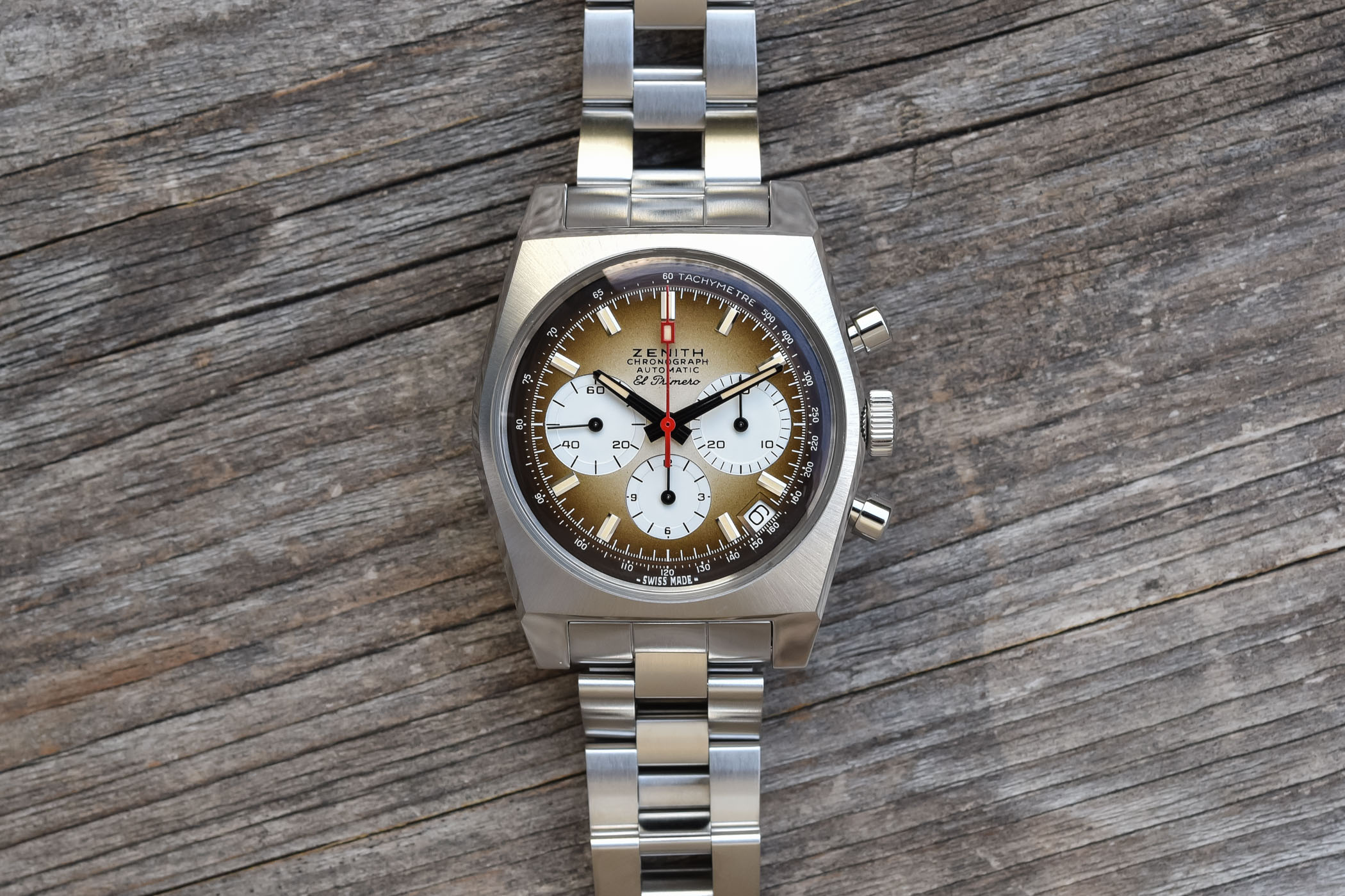
Even after more than 50 years of loyal services, the El Primero remains one of the most fascinating movements to be manufactured. With its column-wheel architecture, its high-frequency, and multiple small but necessary upgrades, it has managed to stand the test of time. In 2019, for its 50th-anniversary, Zenith commemorated this legendary calibre with multiple “Revival” editions of the A386 model, the most sought-after watch in the 1969 trilogy. Last year, it was time for the panda watch, the A384, to be re-edited. Now, in 2021, the brand gives the last and third model its moment of glory, with the new Zenith Chronomaster Revival A385. And today, we give a closer look at this very cool launch.
History
If you’re reading MONOCHROME, you probably already have some watch culture. Thus, if we mention the year 1969, it should give you an indication of what the rest of the article should be about… 1969 has been a year of innovation for the whole industry, but also for Zenith. It is the year the industry unveiled a game-changing concept, the automatic chronograph movement. Surprisingly, before the introduction of not one but three of these architectures, all chronograph movements were hand-wound. But in 1969, three manufactures will unveil their own vision of the automatic chronograph – namely Zenith with the El Primero, Seiko with the Calibre 6139 and the Chronomatic/project 99 consortium uniting Heuer-Léonidas SA, Léon Breitling SA, Hamilton-Büren and chronograph specialist Dépraz & Co with the Calibre 11.
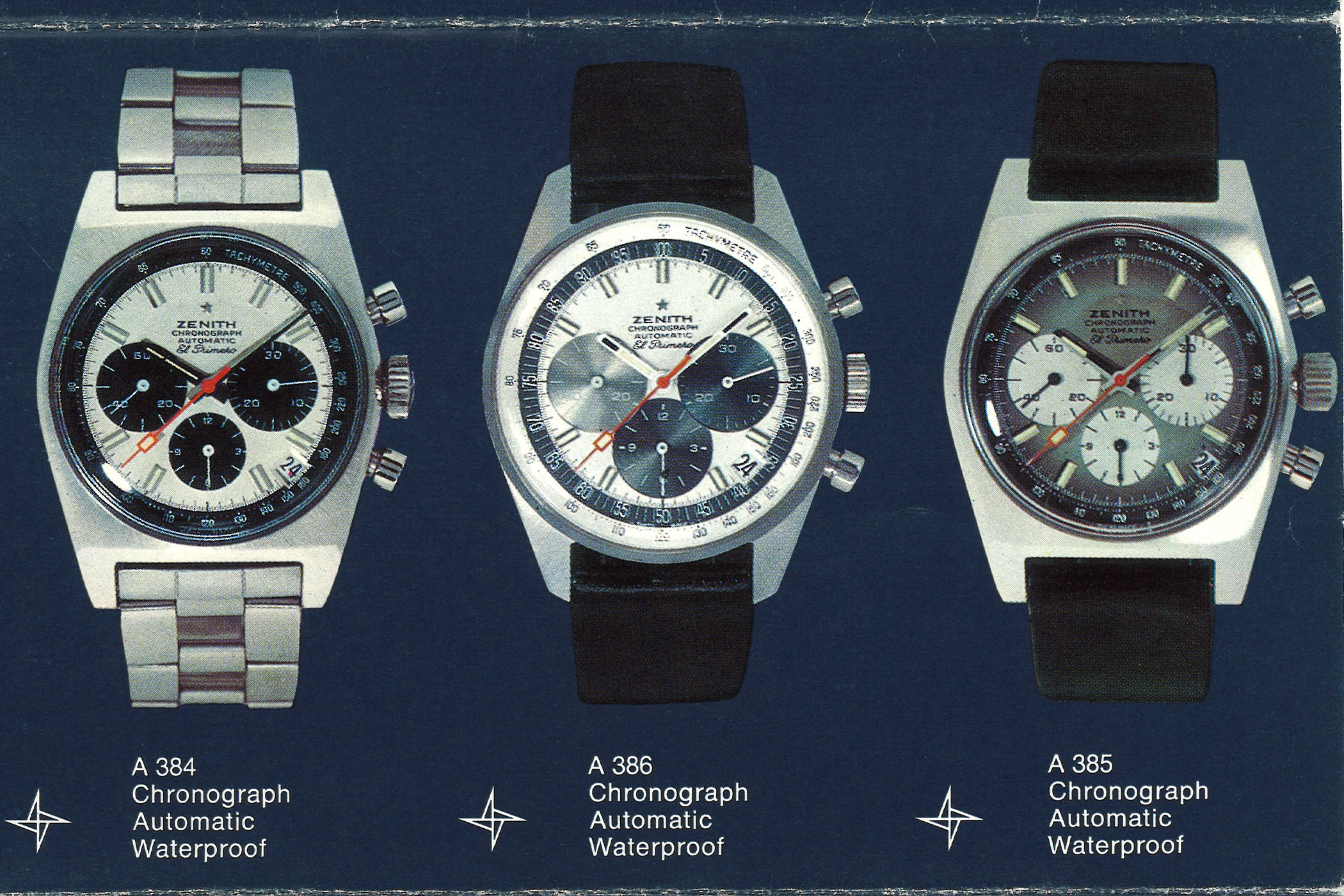
Together with 1865 (the year the brand was created), 1969 is, without doubt, the most important year in Zenith’s history. It has seen the introduction of the world’s first automatic high-frequency chronograph, the El Primero. The column-wheel, 5Hz movement, which is still in production thanks to a fascinating human story – fully explained here – made its debut in three stainless steel models. While the A386, with its more traditional case and tri-colour dial, is the most famous of the lot, there was also the A384 with its tonneau-shaped case and panda dial – which is now available from Zenith’s Revival collection – and another, even more original watch, the A385.

The El Primero A385 is a very distinctive watch. While the two other watches in the trilogy were a bit more classic in their design, the A385 was bold. Based on the same case as the A384, meaning a 37mm cushion-shaped block of steel, it stood out thanks to its dial, with a warm colour and, something new for the industry, a dégradé smoked effect – according to Zenith, this was “the first smoked dial ever to be made in the watch industry” (something that would need to be verified…)
Mechanically, there was no difference between the watches from the trilogy, as all were using the same El Primero movement. Something to be noted about the A385; in 1970, it took part in Zenith’s “Operation Sky.” This extreme test consisted of strapping the watch to an Air France Boeing 707’s landing gear on a flight from Paris to New York to test its resistance to external aggressions such as drastic temperature fluctuations, wind force and changing air pressure. Upon landing, the watch was still functioning perfectly.
The Revival A385
There’s no denying the actual beauty of the watches from the 1969 El Primero trilogy. All of them, with their own distinctive design, can be named “emblematic” – with a special mention for the A386, which has gained an indisputable cult status in auction rooms. Nevertheless, the A384 and A385 models are equally attractive and, possibly, even more representative of the era when the El Primero movement was launched. With the exception of its tri-colour dial, the A386 remains a rather classic watch while the two others, and even more the A385, are watches with true late-1960s styling.
Credits where credit’s due; Zenith should be applauded for the faithfulness of their Revival watches. Certainly, one could note a certain lack of imagination in the idea of recreating a past model, however, as the trend for vintage-inspired watches doesn’t tend to slow down, at least when Zenith does it, it does it right. In short, the Chronomaster Revival A385 is, just like the Chronomaster Revival A384, an almost 1-to-1 reproduction of the original model – except for some minor details. Many (countless) brands have embarked on the vintage train but few can claim to still produce the same movement as the inspiration watch… And that changes everything, specifically when it comes to dimensions of the case and dial layout.
So, let’s get straight to the point, the Revival A385 is extremely loyal to its predecessor, in almost every single aspect. Starting with the case, not only the style has been reproduced but also the proportions. Compact in terms of diameter, at only 37mm like the original, it remains a watch with a relatively modern presence, with a 47mm lug-to-lug measurement. The height is also moderate for an automatic chronograph, at 12.6mm – the El Primero is fairly thin compared to its modern counterparts with vertical clutch.

The shape, since Zenith scanned an old model, is fully identical and retains the sharp angles found on the 1969 cushion-shaped case. The top surface is radially-brushed, which participates in the retro look of the watch, the sides are horizontally brushed, and on the side is a polished bevel that brings dynamism. The main specificity of the case of the A384 and A385 was the angled surface of the lugs, which are still present and polished like the original model. The right side is home for historically-accurate pushers and crown and the main update is the material used for the crystal, where modern sapphire replaces Plexiglas. Other than that, this Chronomaster Revival A385 is basically identical to an unworn 1969 model that would have been kept in a safe… yet with more precise execution. But that’s not new, since the Revival A384 uses the same case.
What changes here is the dial… a funky, bold, colourful, warm dial with outdated coolness. While the A384 played on sporty cues, with a classic panda dial highlighted by a touch of red, this A385 sports a brown smoked dial – with a strong degradé effect ranging from almost black in the periphery to a very light brown-beige in the centre. Framed by a ubiquitous tachymeter scale, it reproduces once again faithfully the design of the original model, down to the facetted and rhodium-plated hour markers and hands, the red central seconds hand, or the inscriptions with historic fonts and logo. The sub-dials, with small seconds, 30-minute and 12-hour counters, are white and so is the date window at 3 o’clock – which gives here visual consistency. The indications are filled with cream-coloured Super-LumiNova, which works well with the rest of the dial’s tones.
While also available on a light brown leather strap, it makes sense to go for the steel bracelet on this watch… Because, here also, Zenith has played on visual accuracy and has reproduced a style that was used on the A384 and A385 models, the so-called ladder steel bracelet with hollowed links, once manufactured by Gay Frères. Light and flexible, it looks and feels right in place in this context.
Under the screwed sapphire caseback – the other noticeable update compared to the historical watch – is a well-known movement, and in fact a movement that is, like the rest of the watch, almost a 1-to-1 reproduction of what once powered the A385; you name it, the El Primero calibre. With a development that started in 1962 with the idea to launch it in 1965 for the manufacture’s centenary, it finally made its entry in 1969. However, after an estimated production of 32,000 movement units, Zenith Radio Corporation (a US company owning the brand since 1971) lost confidence in mechanical watches and, betting on quartz, decided to stop the production of the El Primero, and wanted to get rid of the tooling… but thanks to Charles Vermot, the watchmaker in charge of manufacturing, tools and manufacturing plans were saved, hidden in the manufacture’s attic. And in the early 1980s, Zenith was able to resume the production of its automatic chronograph.
The Calibre El Primero 400 that powers the Chronomaster Revival A385 is the closest you can get from the original 1969 movement. If some upgrades have been implemented (better chronometry, more reliable parts where needed, better decoration and modern manufacturing techniques), it basically retains the same architecture and, a signature element, the 5Hz frequency. It is here presented with a star-shaped openwork rotor and pleasant finishing.
AVAILABILITY & PRICE
The Zenith Chronomaster Revival A385 is available at Zenith Boutiques and online shop, as well as at authorized retailers around the world. It won’t be limited in production. It is priced at EUR 7,800 or CHF 7,900 on a leather strap and EUR 8,300 or CHF 8,400 on a ladder bracelet.
For more details and orders, visit www.zenith-watches.com.

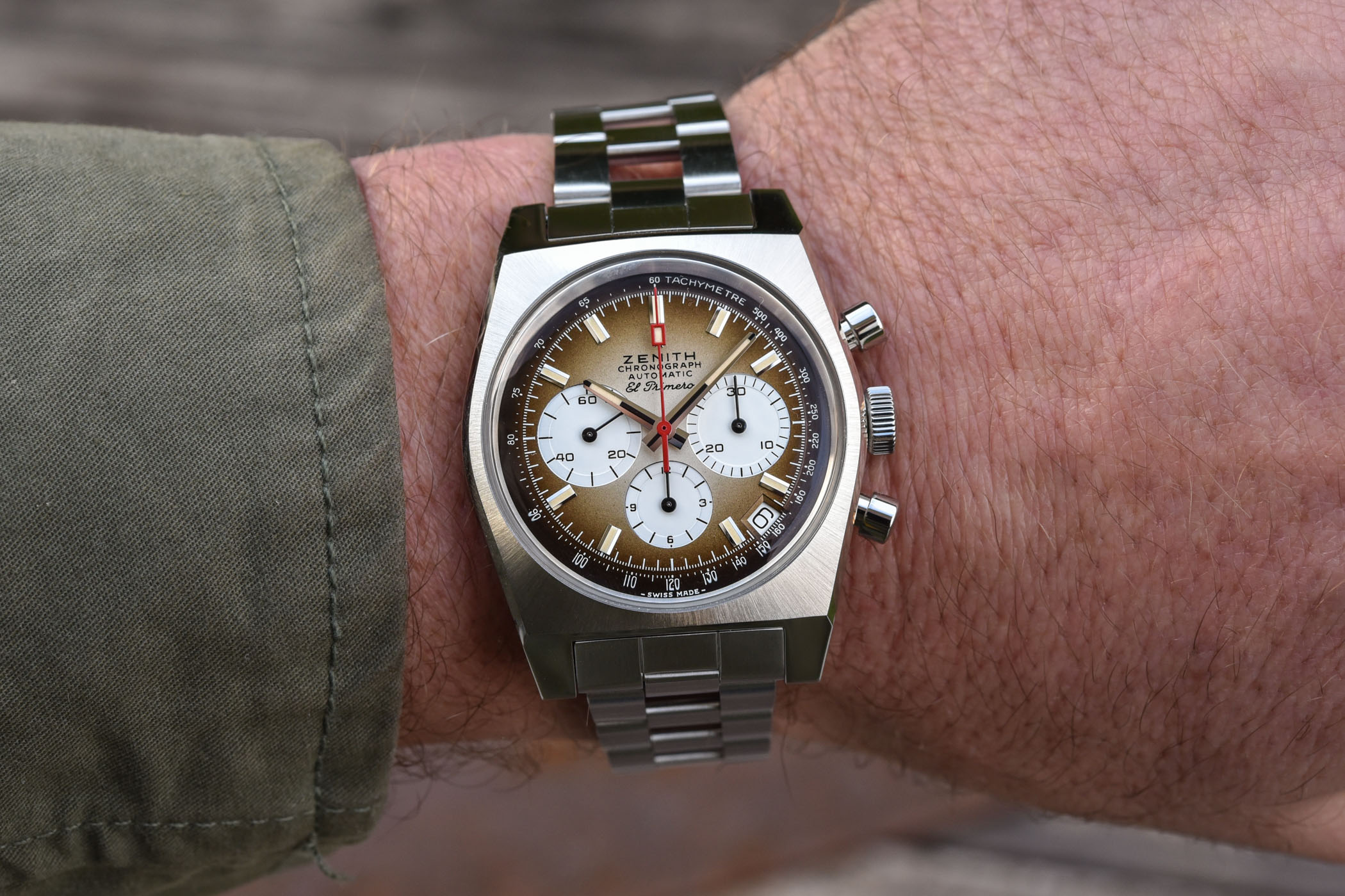

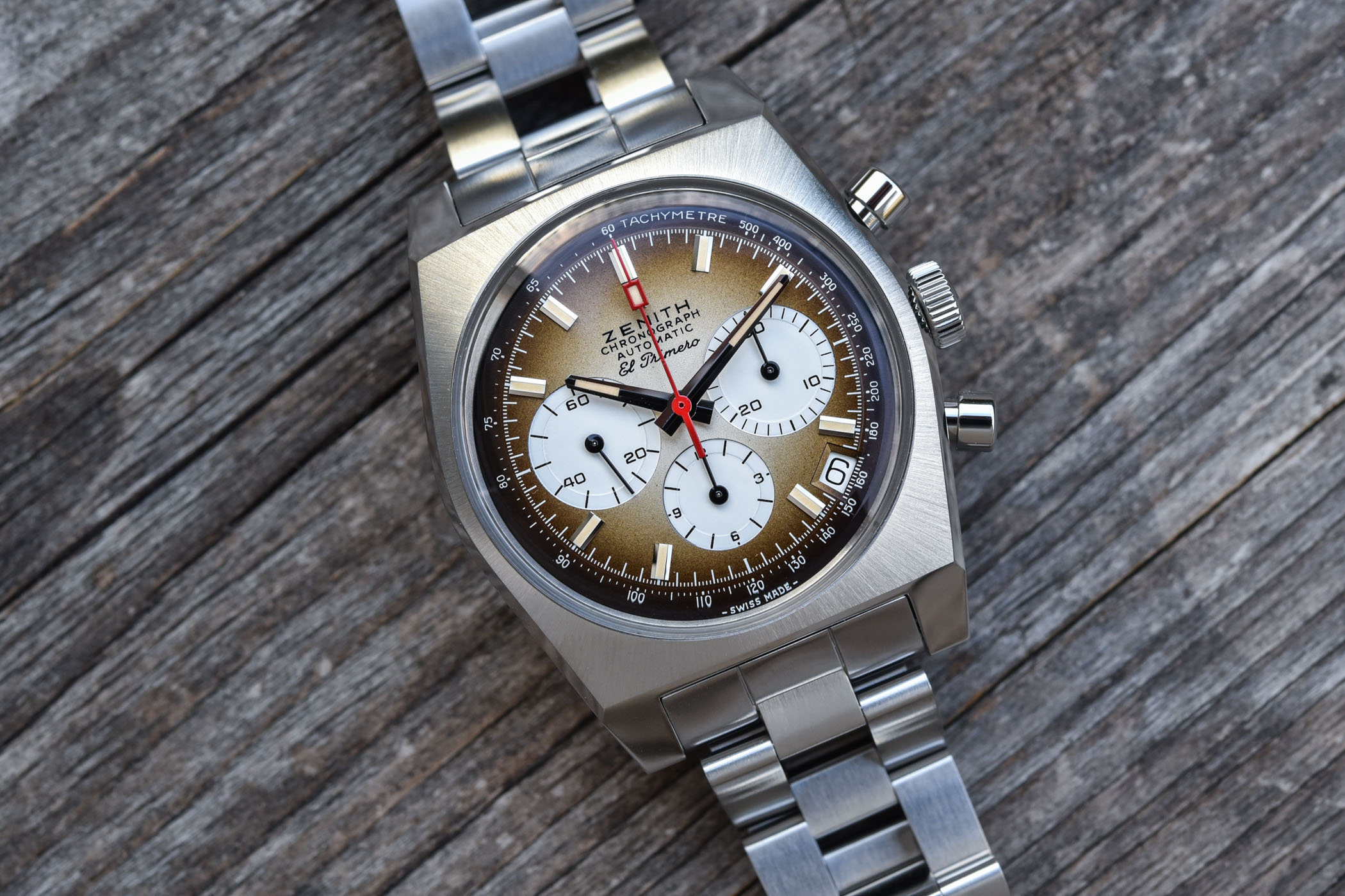

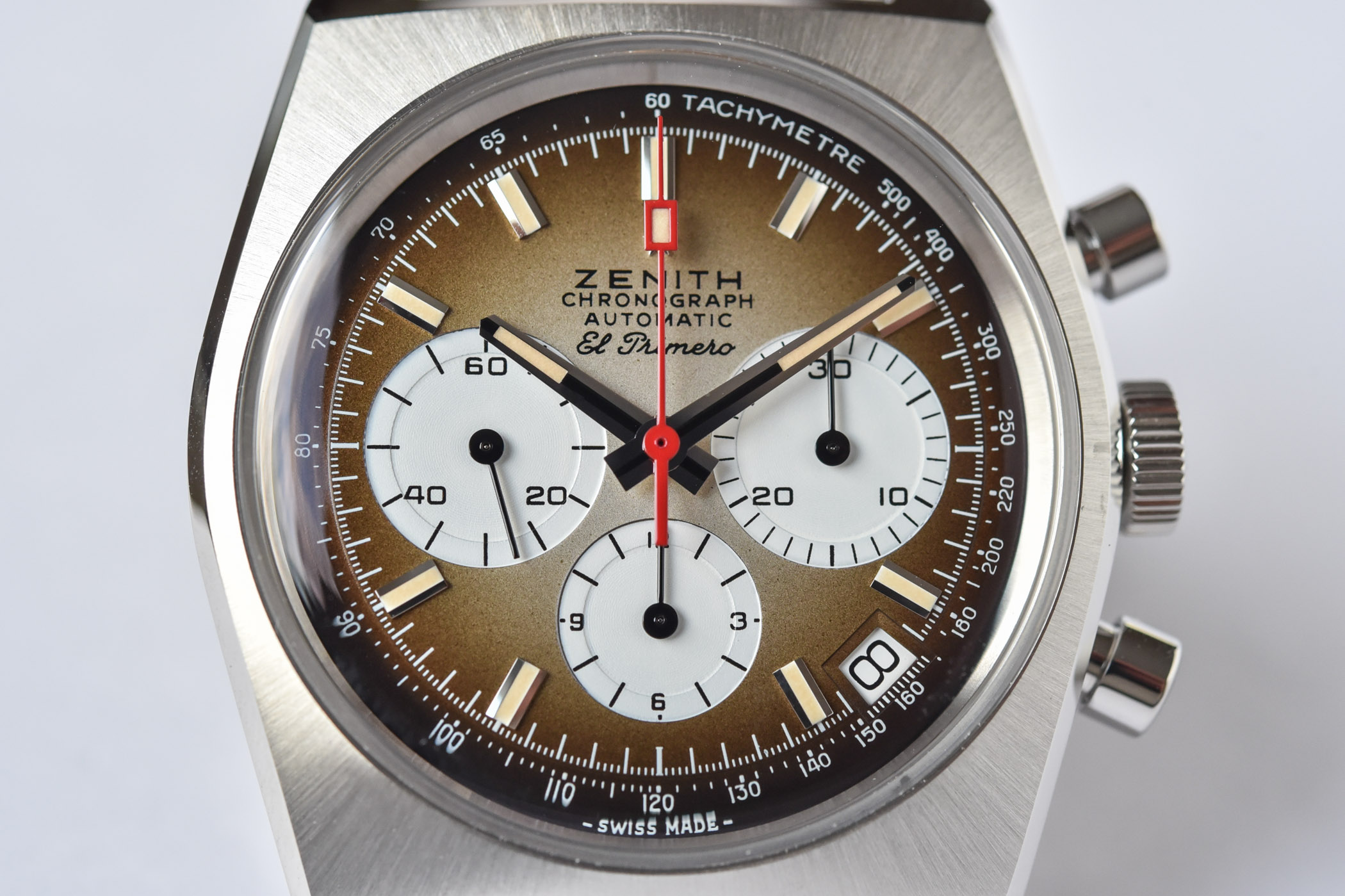
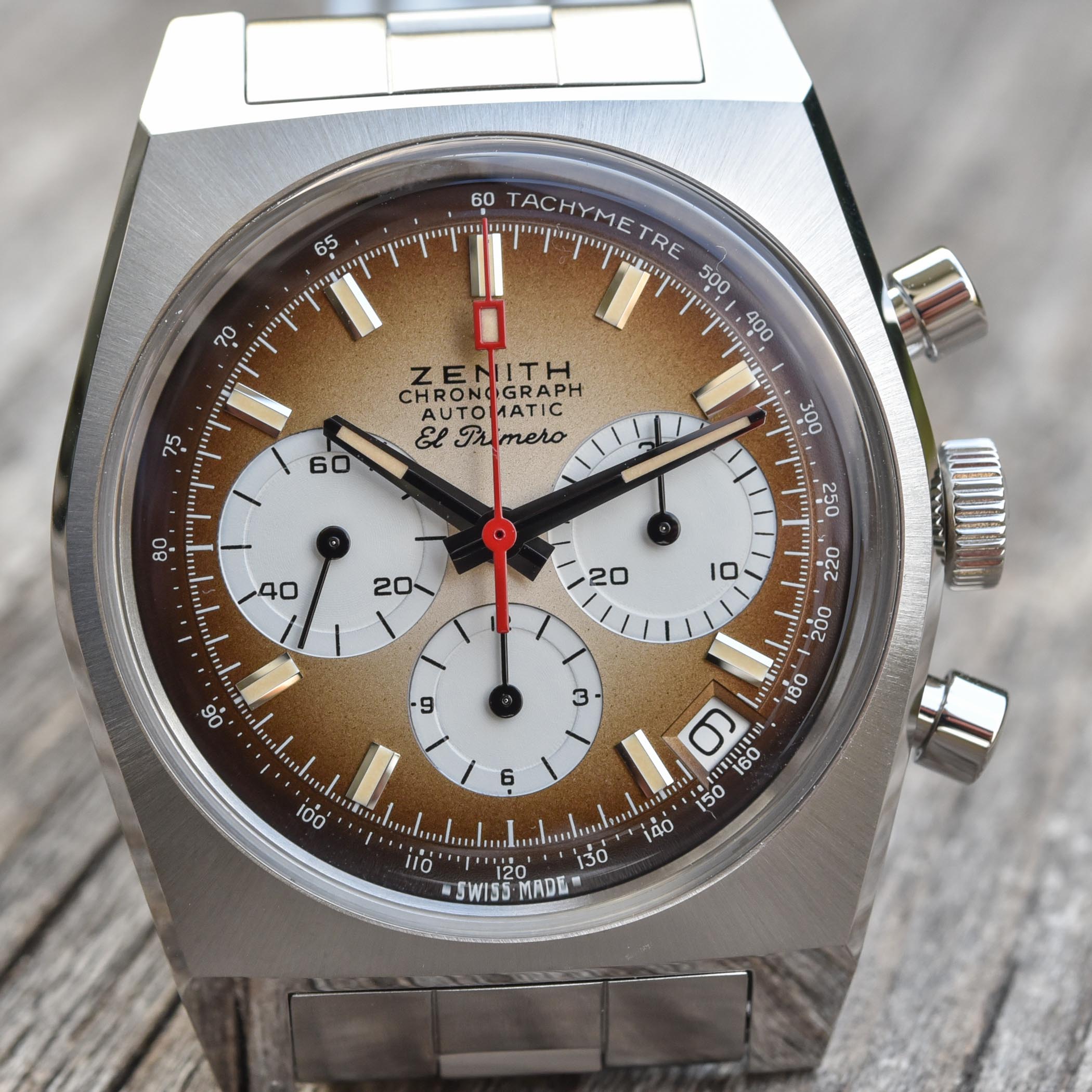
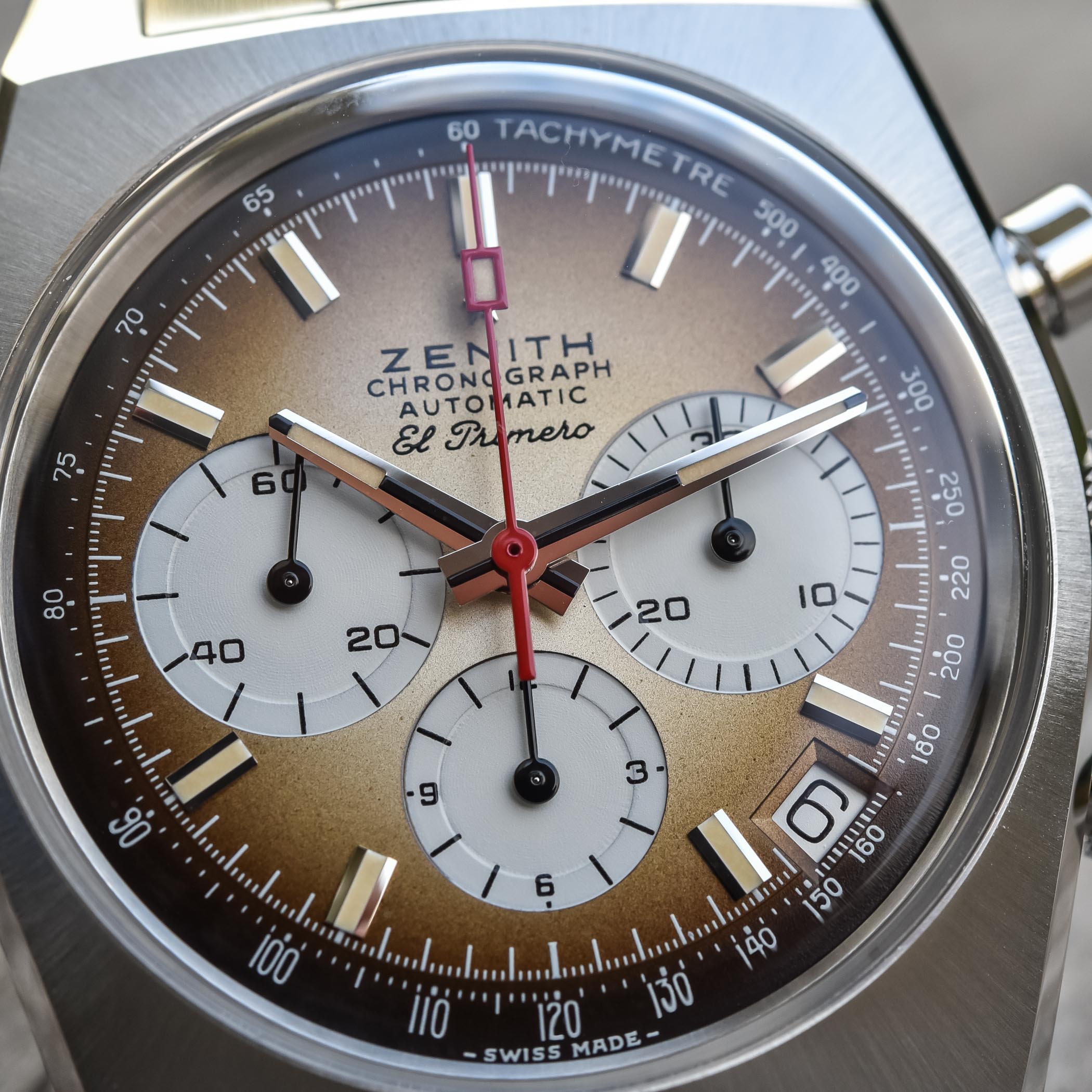
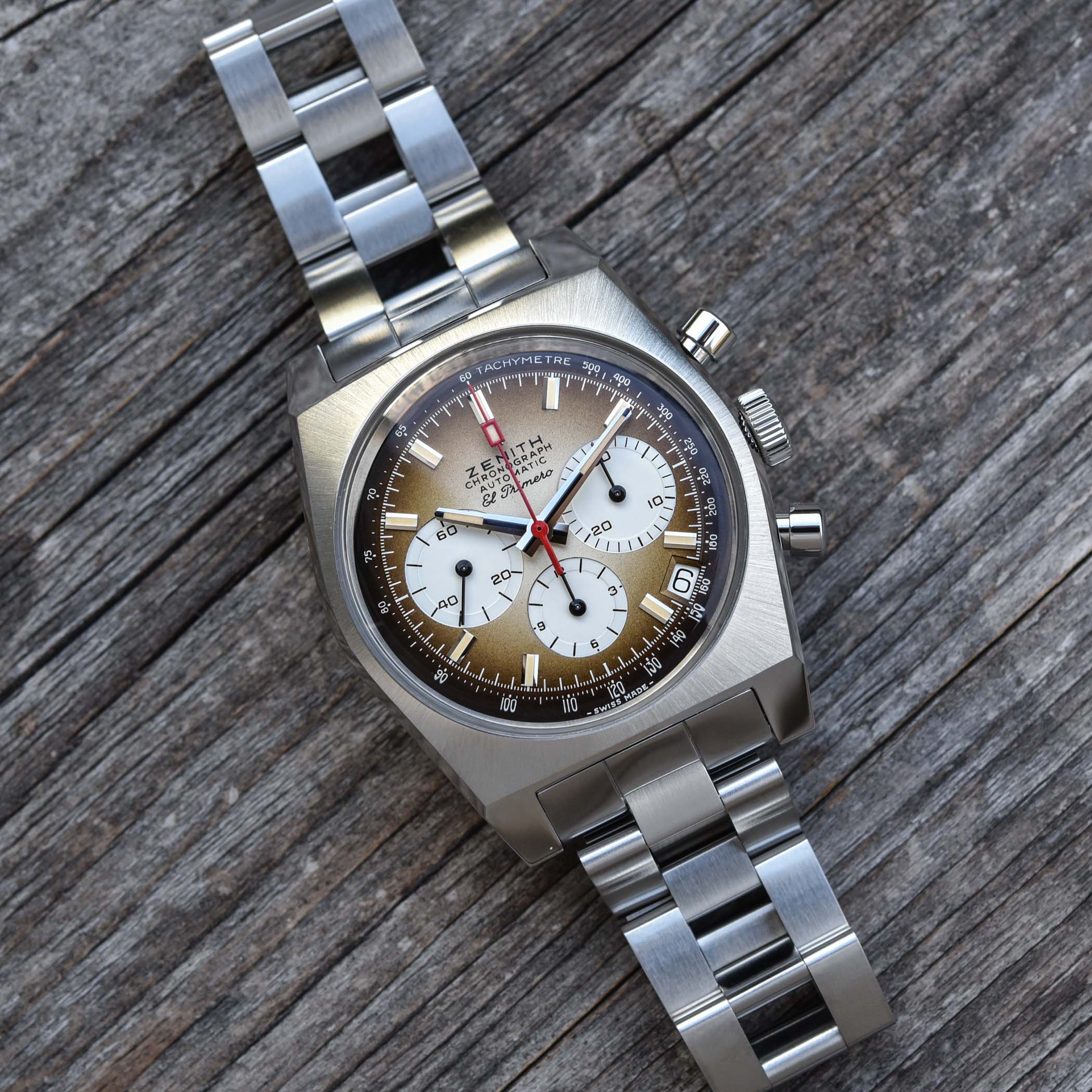
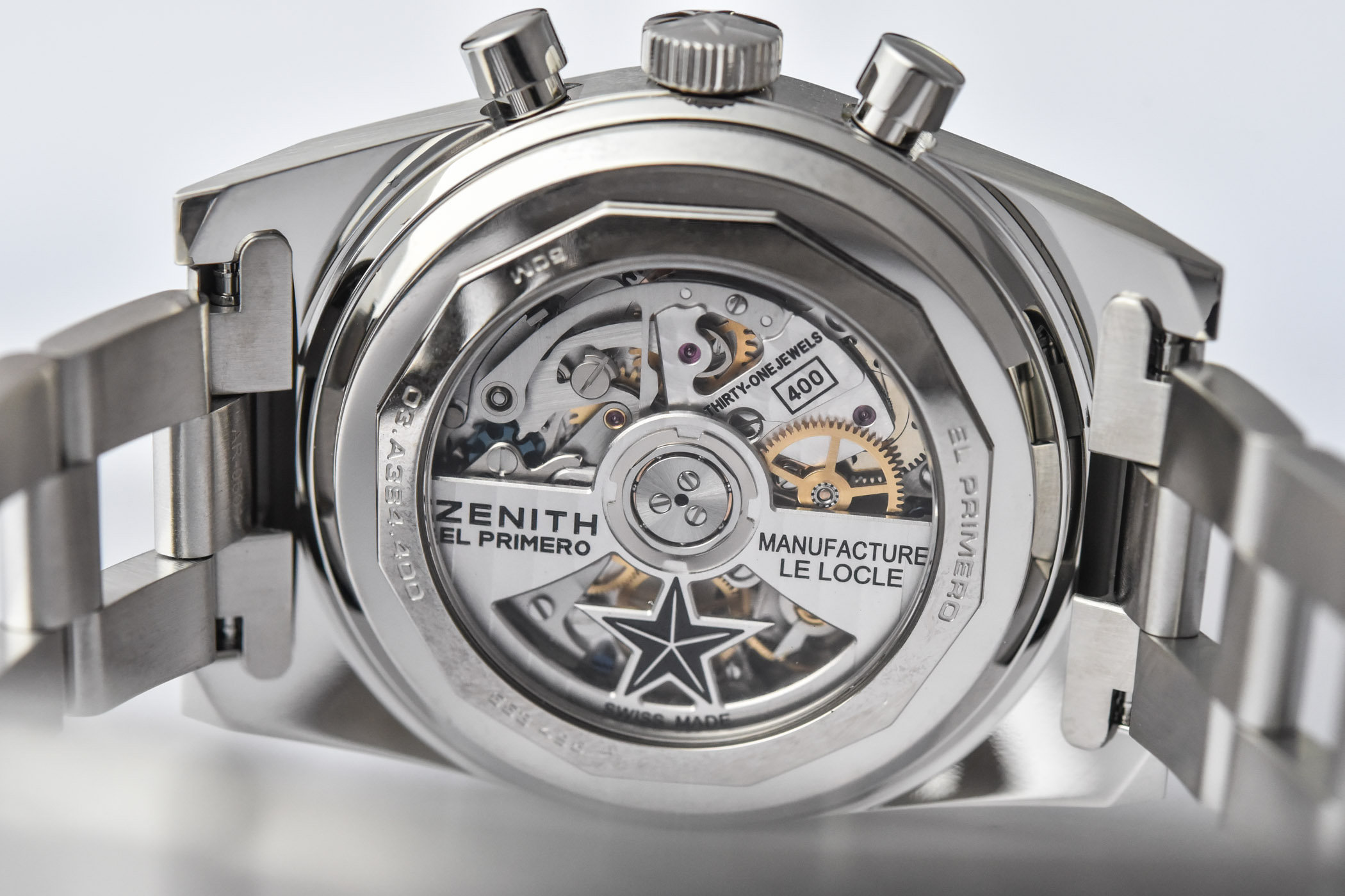



2 responses
Simply perfect.
I think they’ve nailed it. The ladder strap is a perfect fit.